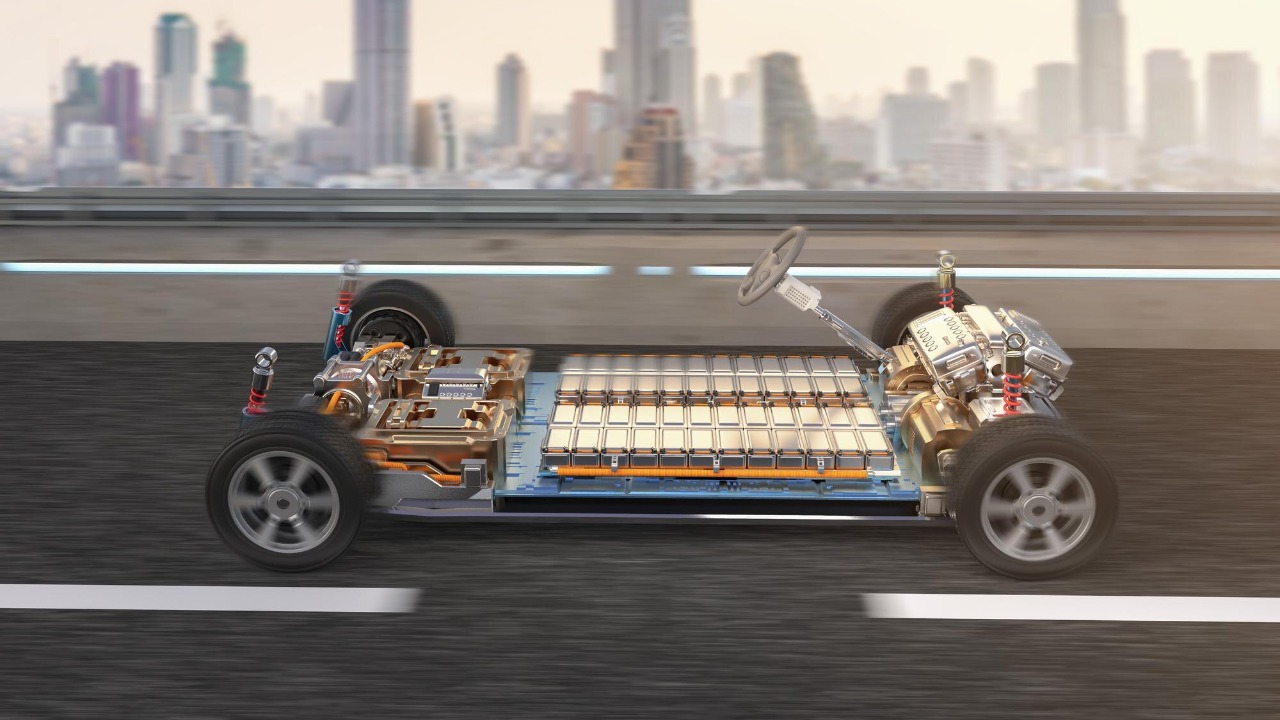
China’s recent breakthrough in solid-state battery technology is poised to disrupt the automotive industry, challenging the dominance of petrol-powered vehicles. This development, coupled with Huawei’s introduction of a 3,000 km solid-state electric vehicle (EV) battery, could potentially revolutionize the global automotive market. The escalating competition in the battery race between China and the United States further underscores the shifting dynamics in EV innovation.
China’s Solid-State Battery Advancements
China’s solid-state battery breakthrough is a game-changer, offering enhanced energy density and safety compared to traditional lithium-ion batteries. This technological leap not only increases the potential range of EVs but also reduces the risk of battery fires, a common concern with lithium-ion counterparts. This development is set to disrupt the reliance on petrol cars, as detailed in a recent report.
Moreover, this breakthrough is well-integrated with existing EV manufacturing in China. The country’s robust production scales and timelines position it as a global leader in solid-state battery production. The Chinese authorities’ policy support, including subsidies and incentives, is accelerating the adoption of solid-state batteries, further strengthening China’s position in the global EV market.
Huawei’s 3,000 km Solid-State EV Battery
Huawei’s 3,000 km solid-state EV battery is a significant innovation in the automotive industry. This battery allows for single-charge drives equivalent to cross-country travel, a feat previously unattainable with traditional EV batteries. The technical specs of this battery, including faster charging times and reduced weight, further enhance its appeal.
Huawei is not working alone in this endeavor. The tech giant is collaborating with automotive partners to commercialize the 3,000 km battery, a move that could potentially reshape the global automotive landscape.
The China-US Battery Race
The battery race between China and the United States is heating up, with China leading in solid-state battery production and the US investing heavily in counter-innovations. This competitive landscape is shaping the future of EVs, as detailed in a report on the great battery race.
The US has responded with policy measures such as subsidies for domestic battery technology. However, these efforts contrast with China’s scale advantages, which are largely driven by its extensive manufacturing capabilities and supportive government policies. This competition also has geopolitical implications, with trade tensions affecting EV supply chains and shaping the global EV landscape.
Impact on Petrol-Powered Vehicles
Solid-state batteries like China’s breakthrough could accelerate the phase-out of petrol engines by offering superior range and efficiency. This development could lead to declining petrol vehicle sales, particularly in regions adopting Chinese EV technology. Automakers are also shifting investments from internal combustion engines to solid-state EVs, a trend that could further challenge the future of petrol cars.
EV Charging Technology and Grid Integration
Advancements in EV charging technology, such as ultra-fast chargers, complement solid-state batteries. These developments not only reduce charging times but also enhance the overall EV user experience. However, widespread EV adoption poses challenges for grid infrastructure, necessitating effective load management strategies, as covered in a comprehensive study on charging impacts.
Increased charging demands also have policy consequences for utilities and governments. Policymakers need to balance the need for reliable electricity supply with the growing demand for EV charging, a challenge that requires innovative solutions and strategic planning.
Challenges in Solid-State Adoption
Despite the promising prospects, solid-state battery technology faces several challenges. Manufacturing hurdles, such as material sourcing issues, pose significant barriers to scaling production. Safety and durability concerns in real-world EV applications also need to be addressed. Furthermore, cost barriers prevent immediate widespread use, a challenge that both China and the US need to overcome in their battery race.
Future Trends in EV Innovation
Looking ahead, trends toward hybrid solid-state systems in global EVs are expected. China’s lead in this area could influence international standards for battery performance, shaping the future of EV technology. Beyond cars, solid-state batteries have potential applications in energy storage, a development that could further disrupt the energy sector.